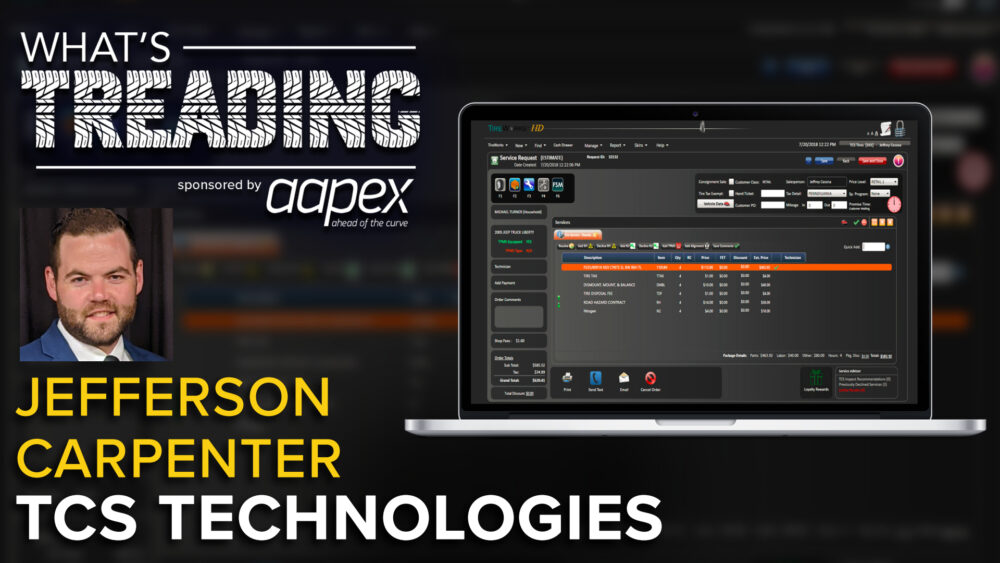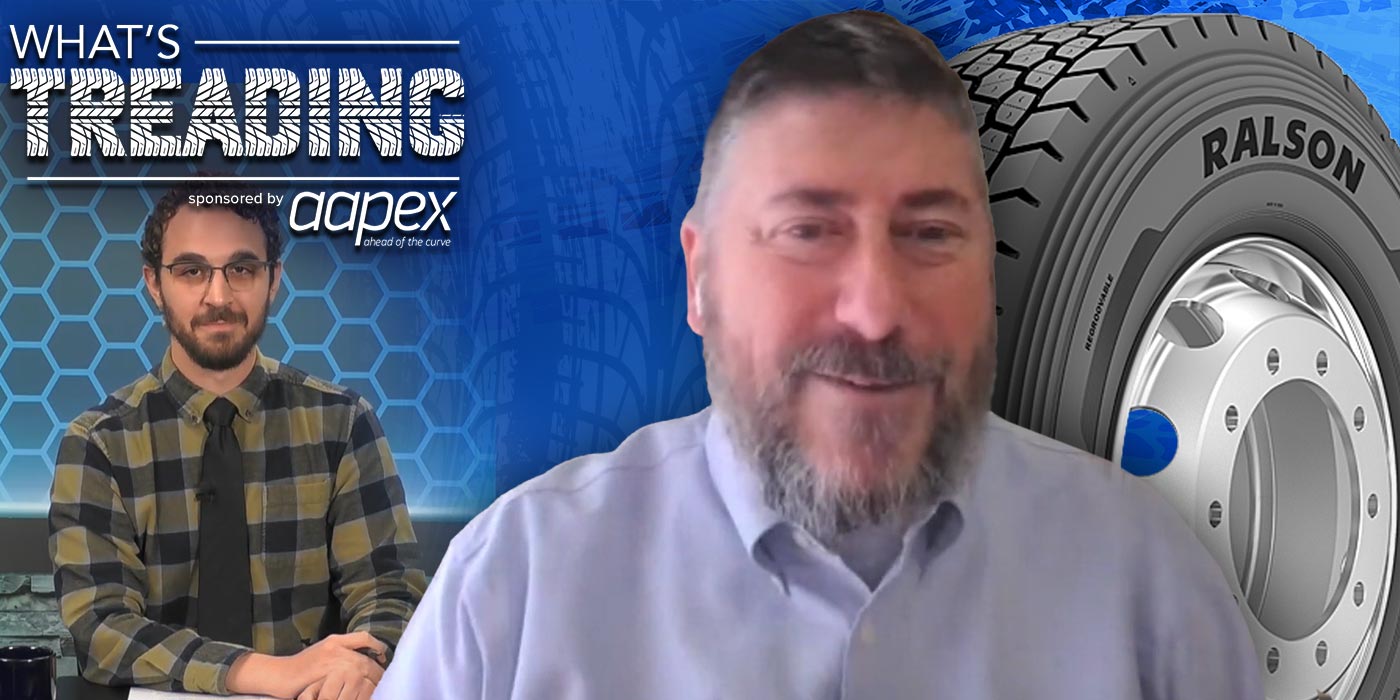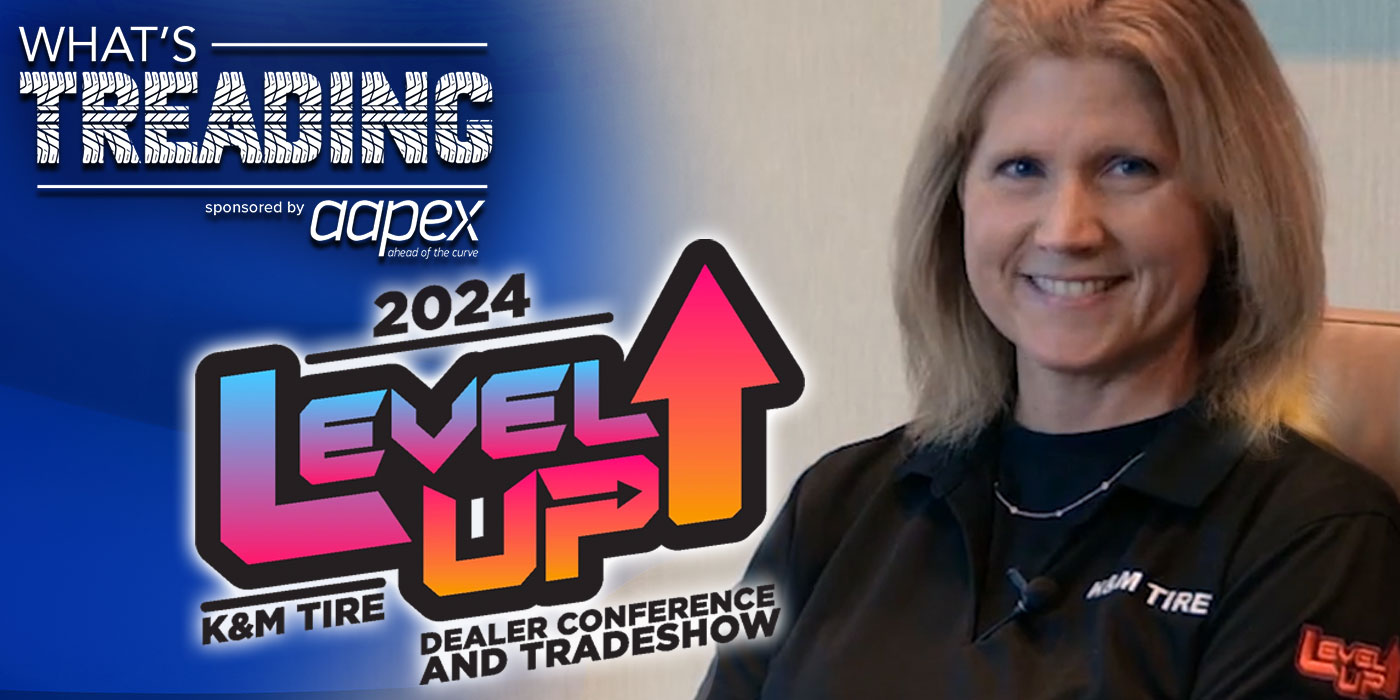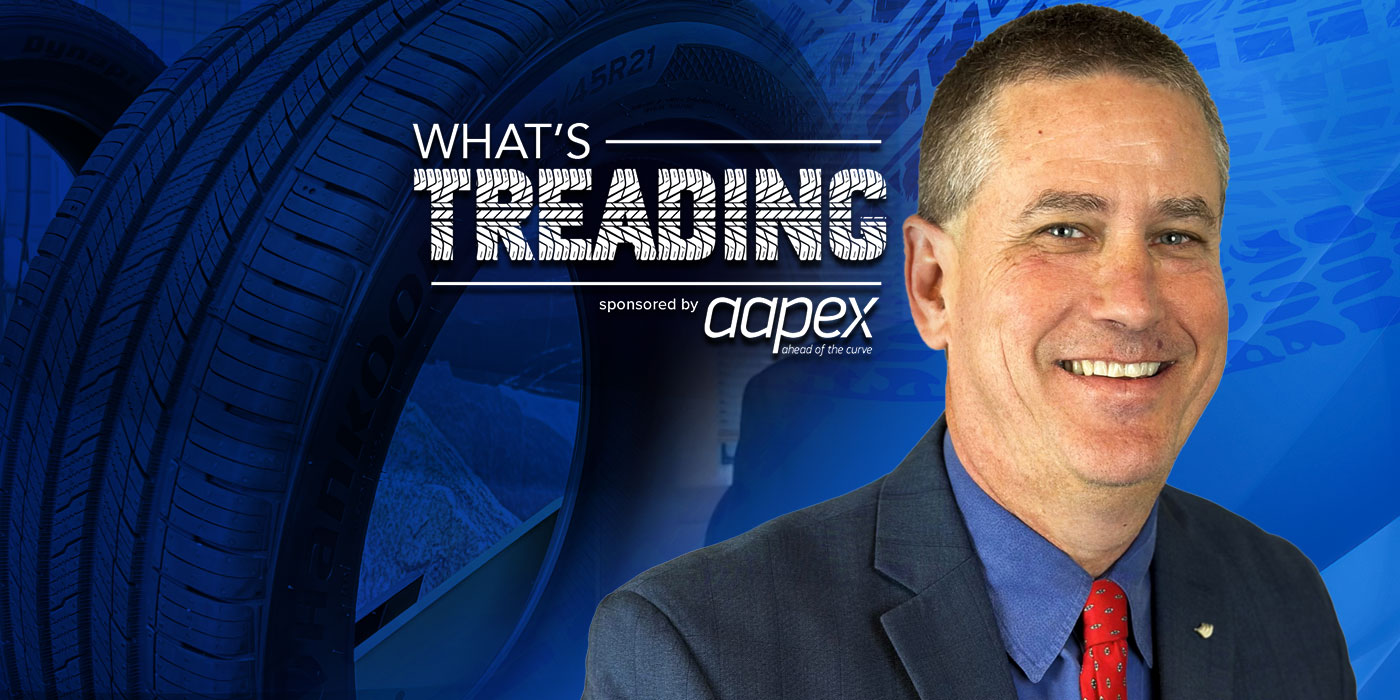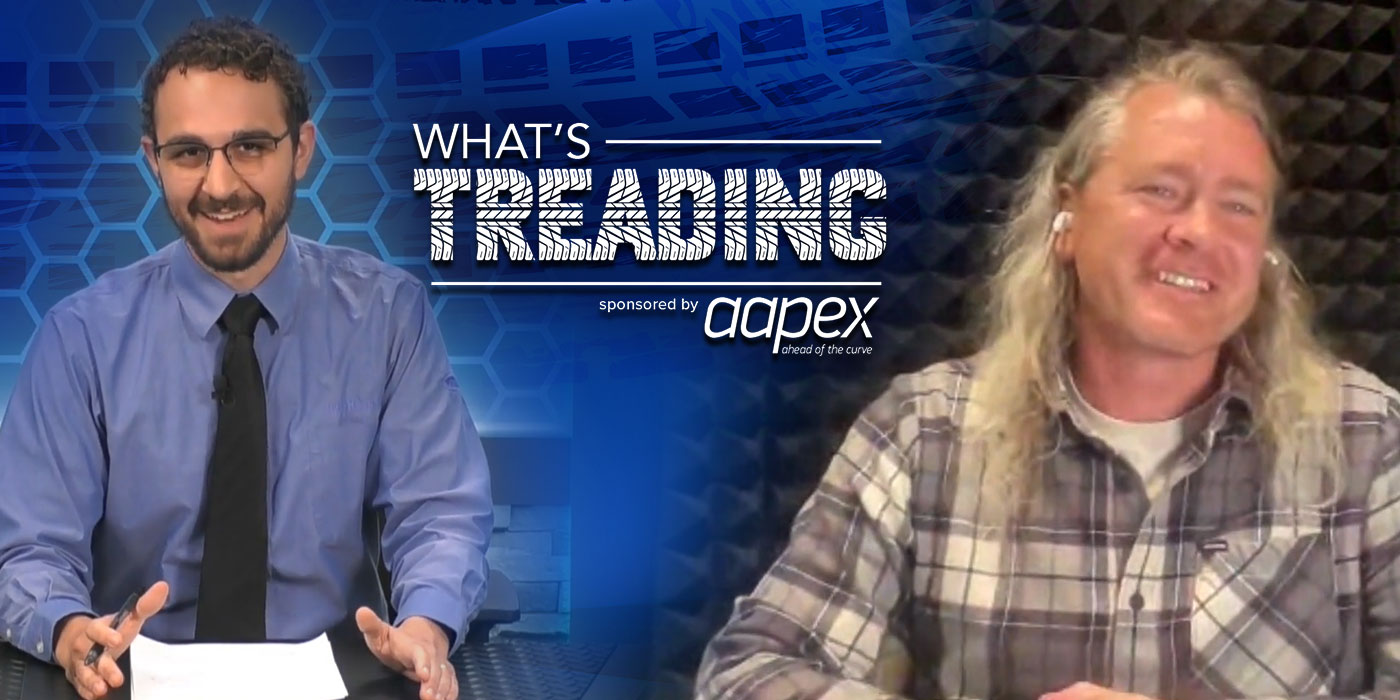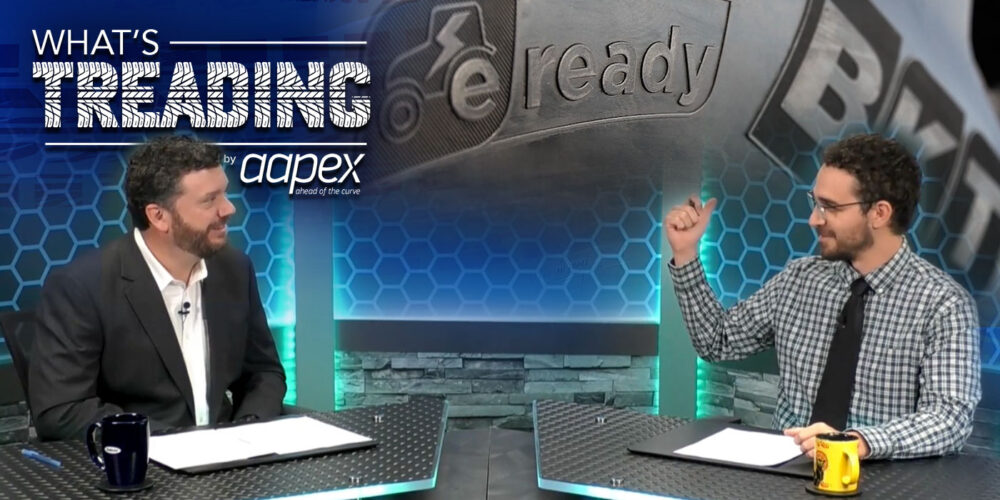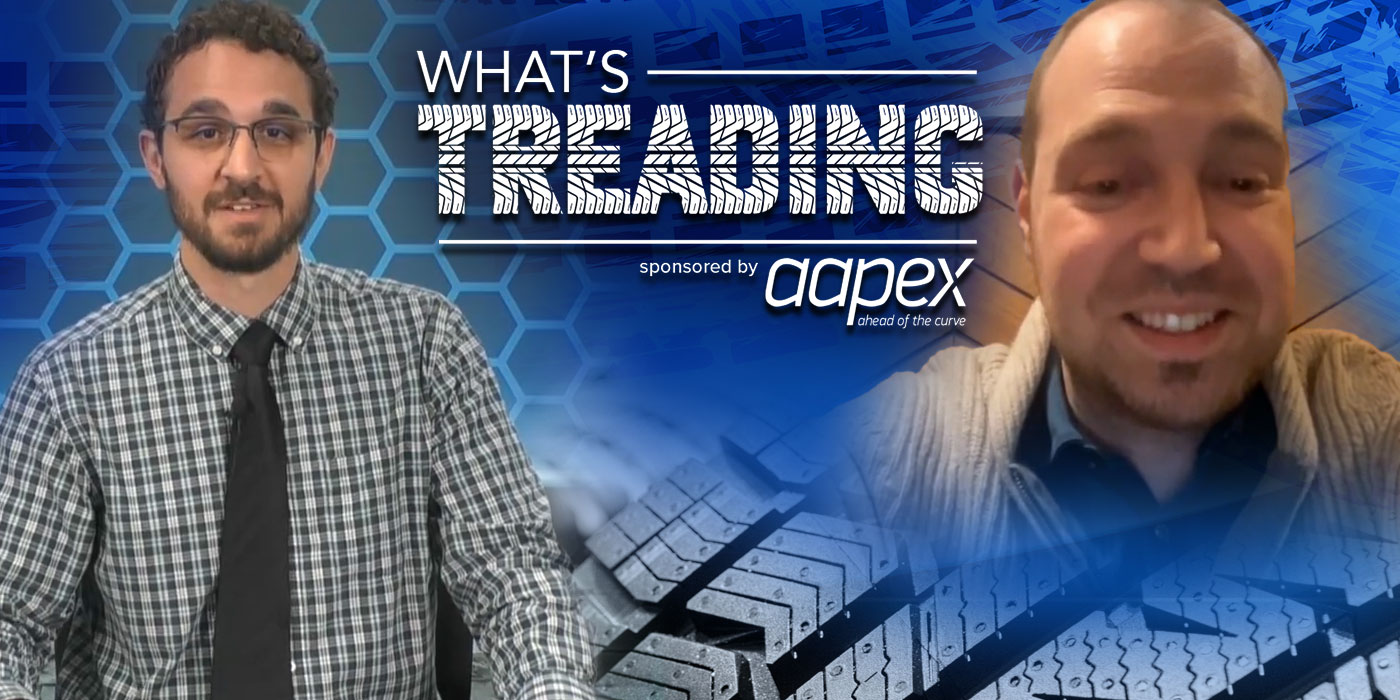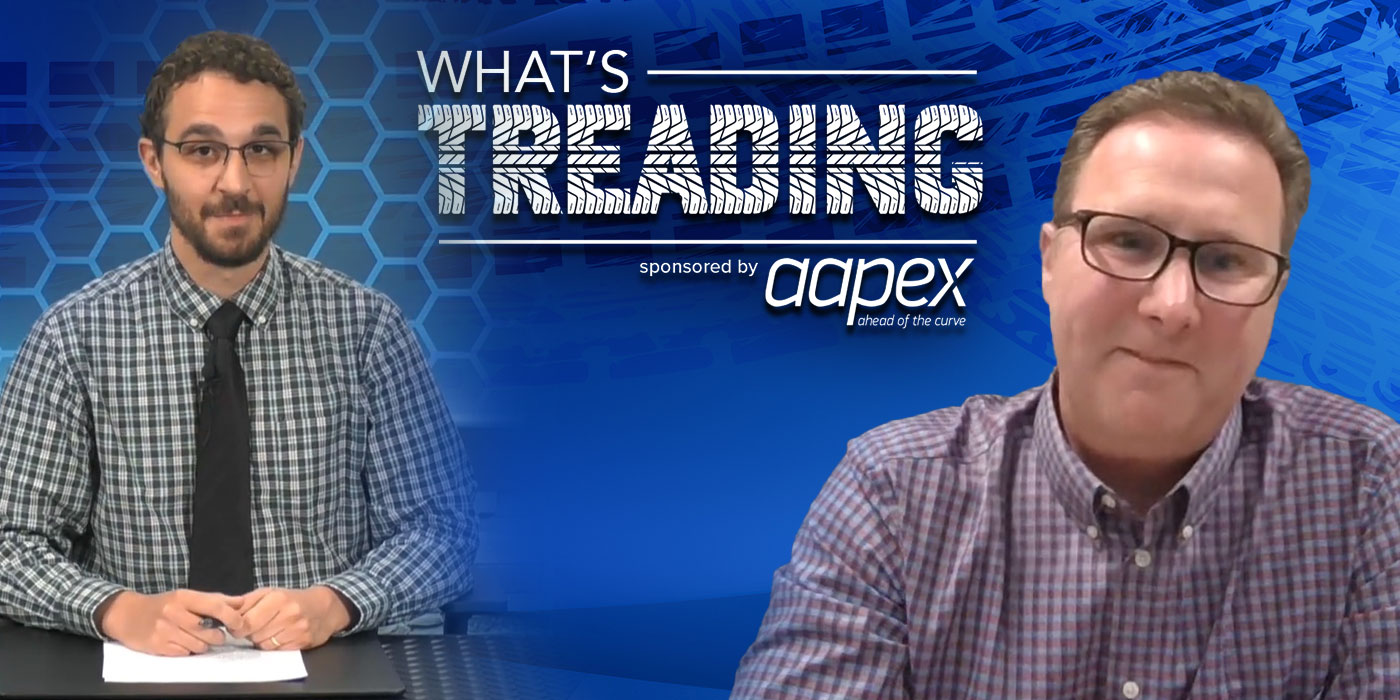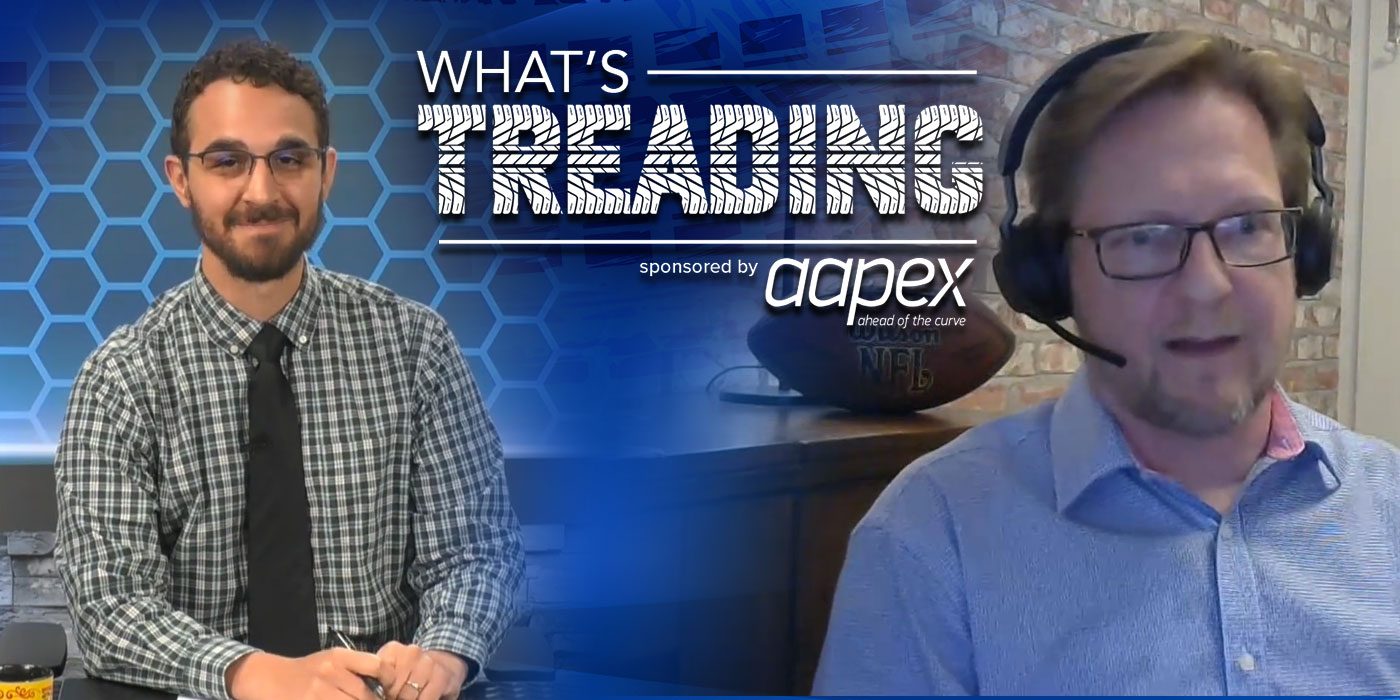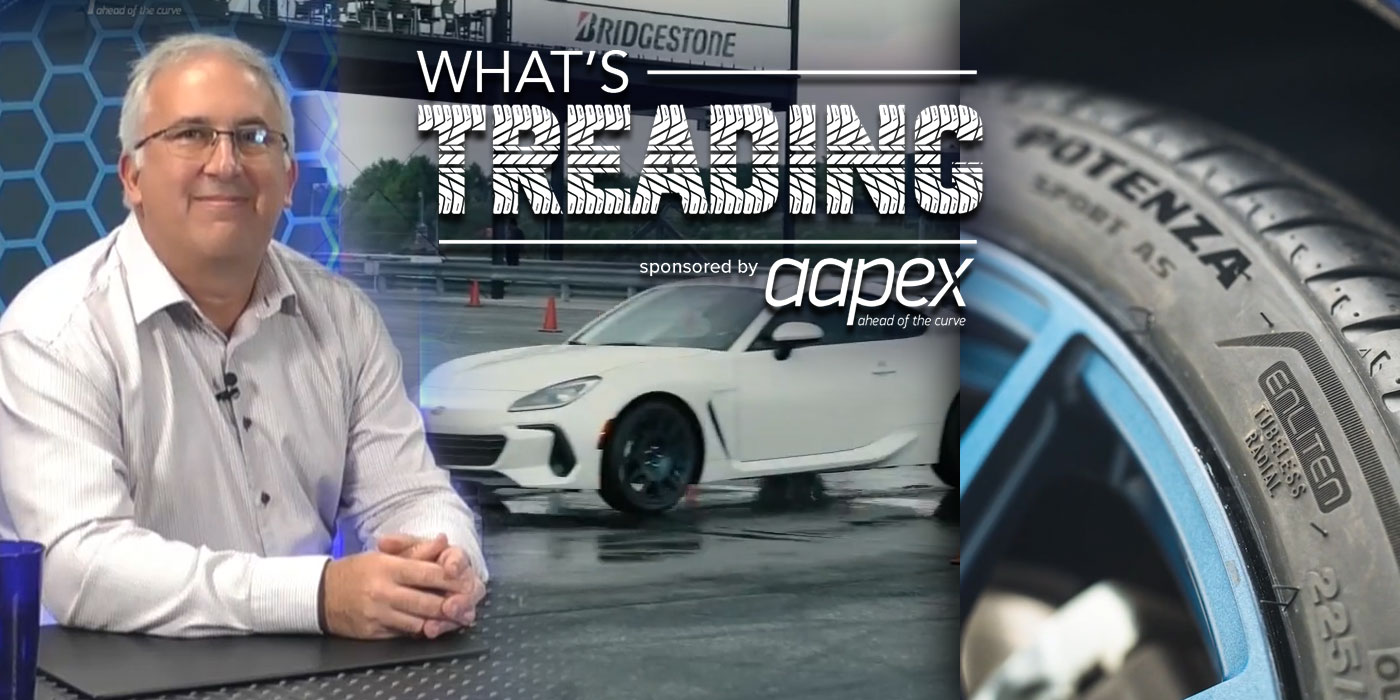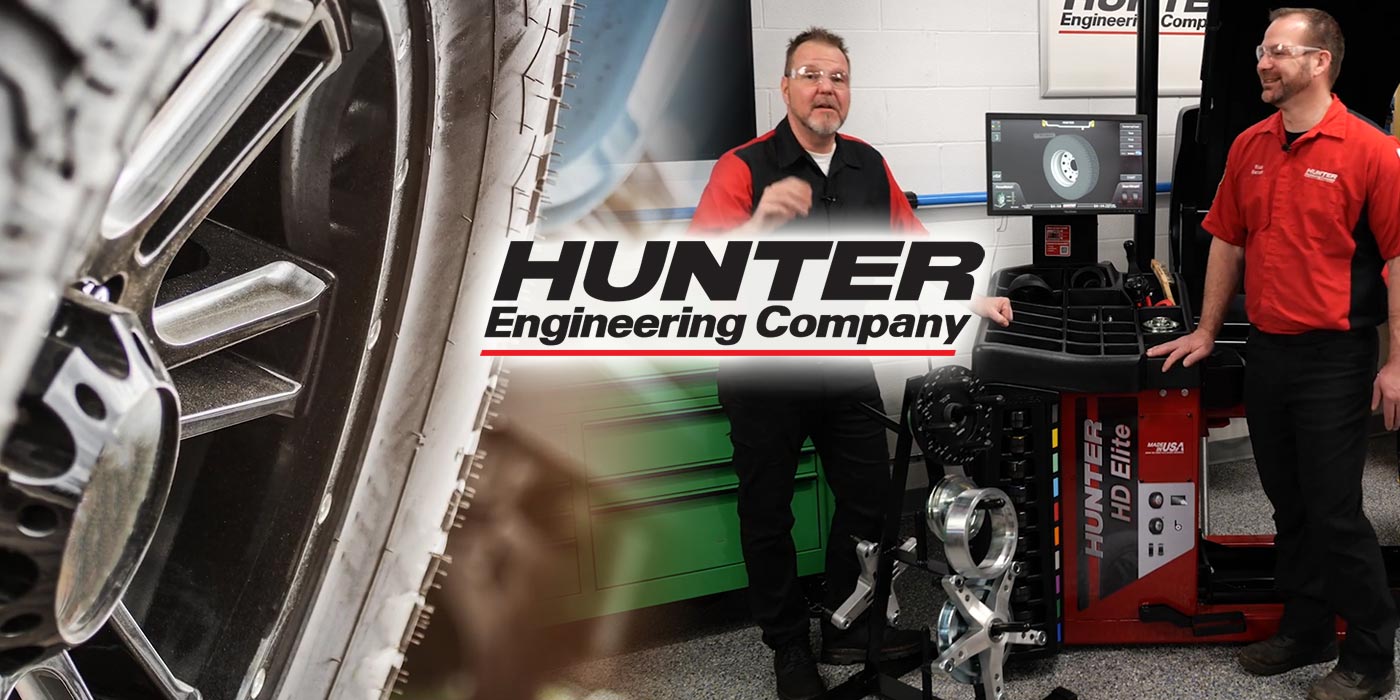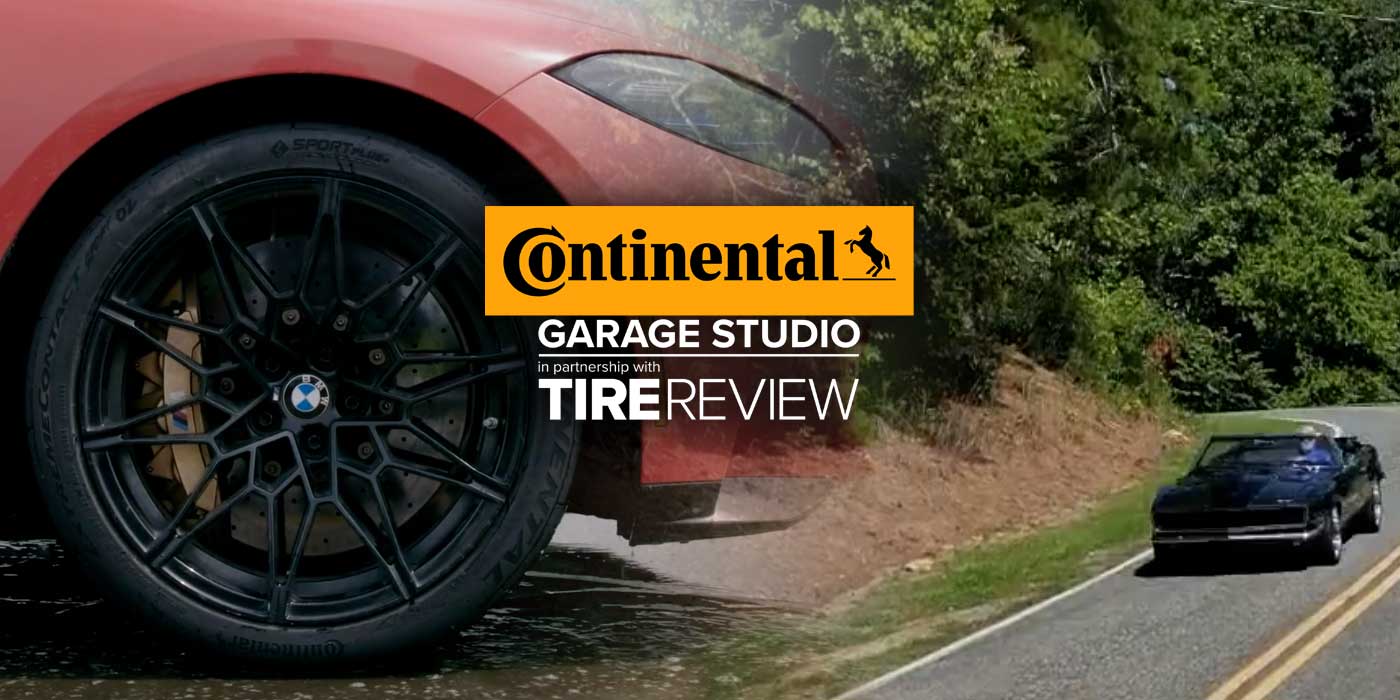We can all accomplish tasks with an easy click of a button today. Take shop management systems, for example. With a few clicks, you can order new tires or parts, invoice customers and even check on a vehicle’s status in your shop workflow or check in on your accounting. Shop management systems allow you to manage your shop, literally, at your fingertips, and one company has purposely changed the way it packaged its shop management software to make it easier for dealers like you to get the tools you need.
That is TCS Technologies, a company that creates software, websites and marketing tools for tire dealers, distributors and auto repair shops. In this episode of What’s Treading with Tire Review, presented by AAPEX, we caught up with Jefferson Carpenter, director and general manager, to delve into what TCS’ software offers, features dealers might be missing out on and TCS’s recent integrations with companies in the tire industry to streamline shop processes.
EPISODE OVERVIEW
- Key features of TCS’s TirePower and TireWorks HD (0:45);
- Changes TCS made in how it sells its software to dealers to help make tire dealer businesses more efficient (1:50);
- Integrations with Tiremetrix, Bartec and Hunter Engineering and how they work (3:04);
- Common tools that go unutilized in shop software and how TCS is bridging the gap with dealers in making sure ROI-generating features are used by service advisors, owners and staff (6:40);
- Jefferson’s experience at tire shops and how his experience informs his role with TCS today (8:50);
- Recent upgrades and features to TCS software and what tire dealers should know about TCS going into 2023 and TCS’s recent partnership with Bridgestone’s affiliated dealer network (11:18)
Subscribe to What’s Treading on Apple Podcasts, Spotify and Google Podcasts. You can also read the full interview below.
Maddie Winer, Tire Review Editor: TCS has two distinct shop management software systems for tire dealers, the Tire Power system and TireWorks HD. Can you explain which each is suited for and a few key features of each of those products?
Jefferson Carpenter: So, really both applications or both platforms do a lot of similar things. They both sell tires, they both handle service, and really everything else you’d expect out of a point-of-sale system. Just how we go about it is a little bit different. Tire Power is our legacy software. It has its own accounting package built into it. It is more geared toward your one, two location owner-operator business. Whereas TireWorks HD, which we debuted at SEMA in this exact space 12 years ago, was originally designed for the larger top 100 dealers. These dealers tend to be more progressive, growth-oriented dealers. We have 15 of the top 100 that are using our application today.
Winer: Now in recent years, TCS has made some changes in how it sells its software to dealers. Can you maybe take me through that evolution? How has that gone? What kind of changes have you guys made?
Carpenter: Absolutely. So, we really realized that there was a bit of a trend in the industry when a dealer bought the software. They essentially got to the point where they were live and productive in using it, and that’s about where their evolution with the program stopped. They weren’t realizing all those ROI-type features that we were showing them in the sales process. They weren’t realizing what else we had to offer in terms of integrations or partnerships. So, we took a step back and said, “How do we create better adoption of these tools that are ultimately built to help the dealer be more successful, more profitable, more efficient?”
We came up with a comprehensive, all-inclusive best practice toolkit or package for our program to make sure that dealers were getting everything available to them. We weren’t nickel and dimming them for more add-ons or services because everything we do is geared toward helping the dealer be more successful and more profitable. And they’re realizing all those benefits right out of the gate. So, it’s been hugely beneficial. That was about four years ago.
Winer: TCS has also formed some partnerships in recent years with companies in the tire industry to make dealers’ jobs just a lot easier. So, tell me about your partnerships and more recent integrations.
Carpenter: Part of that whole move to go with an all-inclusive, best practice package for our program was to do a lot of research and build relationships with industry leaders. We identified companies to integrate with, and because we chose the best of the best, we’re able to go all in on those integrations instead of having mediocre integrations with everybody. So, a few of those partners that we’ve worked with, Tiremetrix is one of them and Joe Donahue, the leader on the DOT registration side of the business. [Their software] validates that DOTs are active and, there aren’t any recalls on them. We helped work with them to pioneer their TRP Smart Technology.
Over the years, they’ve compiled the database of all of the DOT numbers and essentially if they were provided the tire information that’s on the work order, they could pretty accurately predict the prefix of the DOT because they know what the manufacturer code is, they know what plant it was manufactured out of. They just don’t know the week and the year, which is the last four on the DOT number. So, with that technology, we pass them the tire information that exists on the work order, and then back via the web service, they give us that tire prefix. All the user has to do is type in the last four digits, making it really easy to register DOT numbers.
In addition to that, we also work with Hunter Engineering. So, we partnered with them probably four or five years ago. We started the integration with Hunter and we created the industry’s first two-way integration with the WinAlign software on their HawkEye aligners. So, all of the open work orders that have alignments on them would show up in the WinAlign software. And then once the alignments or the alignment inspections are completed, those completed printouts would come back into the [shop management] software with the history of that customer and also show the customer the details and the results in the consumer-facing view of the work order.
Winer: You guys also have another integration with Bartec. Is that right?
Carpenter: Yeah, for a couple of years. We really went all-in on our own digital inspection platform. We took a basic digital inspection platform and really invested in making it a mobile experience where you can check customers in at their vehicles out in the parking lot, which creates the work order. We also have a technician view, so that all of the details on a work order exist on a tablet, eliminating paperwork in the shop. As part of that, we built an integration with Bartec’s Tech200Pro device, which is a TPMS relearn tool, but it also has a tread depth scanner plunger and measures the inflation of the tire. So, the users can quickly gather those data points, hit the Bluetooth button, and then it’ll transmit the data back to the tablet while they’re doing the inspection, making it really easy for them to capture that information.
Winer: Jeff, I’m curious, when speaking with your customers, what do you feel are some underutilized tools in these two software systems that could really add to shop efficiency for tire dealers?
Carpenter: I spoke to it just a minute ago… A lot of dealers have the tendency to get to the point of just being productive and not necessarily realizing all those benefits. And with my background in a shop environment, and understanding the opportunity in front of these customers of ours, we actually created a new department to bridge the gap between our implementation team and our support team, called our customer care team. Their exclusive job is hypercare with new customer go-lives and then helping customers to realize all of those ROI-generating features and make sure they’re utilizing them. So, we talk a lot about creating consistency across locations and across salespeople, especially since we have a lot of multi-location dealers that use our product.
We have tools in our software, if set up and configured properly, you’re able to really walk a novice service writer through the exact process and the exact way that your most senior service writer or even owner would be handling customers at the counter.
Another tool that we have that is probably underutilized, and it’s a super powerful tool…we have a feature called the TireWorks HD Advisor. So, every time a new customer comes in and a new work order is created, we have a screen that pops up and essentially, we aggregate all of the historical data about that vehicle from CARFAX, from the digital inspection results, from any intervals that exist on the packages that are set up in the software. You can also see declined services, giving the service writer all of that information when the customer drops off their car, allowing them to be able to sell those high margins, low comeback services based on date and mileage alone when the customer’s already expecting to get a price and pay as opposed to when they’ve already left and we have to try to get ahold of them via text message or whatever else. That tool alone on day one pays for the investment 100 percent.
Winer: Now, you were mentioning your experience in working in tire shops. Can you go into that?
Carpenter: Yeah. So, that’s how I got my start. I was kind of forced into it. I didn’t even want a job. I already had a job, but a family friend was like, “I need help at my shop. Come work for me,” and now I’m living in the tire industry. I can’t get away, but love it here. I kind of bounced back and forth between the service writer, the sales side of things and the shop, so I’ve experienced both.
I noticed when I was working in the shop, we were paid a commission to perform those maintenance services like coolant exchanges, transmission and fluid exchanges, and things like that. Our salespeople, our service writers, were absolutely terrible at selling them. I realized quickly, I’m not going to make a commission performing these services if we can’t sell them. It’s kind of the traditional process that exists in most shops. So, what I would do is I’d camp out by the front door if I didn’t have a car, and I’d have customers pull their vehicle in and check everything out while they’re still there with me and present all that opportunity to them at the right time, which is when they dropped their vehicle off, as opposed to when they’ve already left. We went from just selling a handful of those services per month, and just by myself in college part-time, I was doing 44 a month consistently by myself. So, like I said, realizing where and when to sell those services and just presenting the opportunity to the customer and making it easy for the service writer, which is what our software does. It provides tremendous value to an owner or manager of these stores.
Ultimately what we’re doing is taking care of customers’ vehicles and doing these preventative maintenance services that should be done anyway. Consumers just aren’t being educated on it and just aren’t given the opportunity to be.
Winer: That’s true. What a great connection between that real-life experience and what you do now. I’m sure, as you’re speaking with dealers, you have such a perspective into what they go through.
Carpenter: Actually we have a lot of people in our organization [who have worked in a shop]. Our product director for our TireWorks HD product, for example, he was working in shops and he’s worked in dealerships. We’ve got a lot of employees that came from family-owned tire businesses, customers of ours that are now on our implementation team. So, we have a lot of experience and there’s a lot less of a, I think, communication barrier between our customers and the technology provider, just because a lot of our people already know the challenges and obstacles that are facing the industry. We’ve been there. We’ve lived it.
Winer: For sure. Jeff, last question for you. What would you like tire dealers to know about TCS Technologies going into 2023?
Carpenter: I think one of the biggest developments that we have as of late is TCS’s partnership with Bridgestone. We were recently named as the preferred software provider for the Bridgestone Affiliate Retail program, which is very exciting. It allows all of the direct dealers to utilize 100 percent co-op [dollars] to invest in the software and realize the benefits of having best-in-class software without actually having to pay for any of it. It’s paid through their marketing, their co-op funds. So, that’s a big piece of news for us, and we’re excited about that partnership.
Also, software in this industry is often perceived as this painful transition process, and I think that that is enough of an obstacle to keep a lot of dealers where they are, not necessarily content, but they just don’t want to go through that change management process. We realize that and we’ve invested heavily in a lot of processes and tool improvements to make that process easier. A couple to note: One is we’ve created a staging environment and essentially, we set up our software as an out-of-the-box, best practice approach with the packages, system settings, and configuration we would generally see most dealers need or utilize. So, every single new customer right out of the box has all those set up. They can turn them off and configure them and tweak them, but it’s a lot more beneficial without having to do all of that manual work to set up those packages.
Another one: We’ve been moving a lot of customers over from competitive software products, so we actually invested some resources into creating what we call the ETL project, which is extract, transfer and load. We have a software program that takes databases from competitive software programs and then automatically cleans all that data, puts it into our format, and then loads it into our application with just a click of the mouse. So, manual data cleansing and users going through all that data is a thing of the past for us. That really shortens that data cleanup side of the business, which is important. We’ve created our project plan for new implementations with automated tasks and more of an assembly line-type approach, where it’s not one person necessarily taking customers from start to finish in this project and dragging it out.
Finally, training was a big piece for us, because if you’re thinking of a multi-location dealer with 100 stores or 50 stores or even five stores, you’ve got all those employees to train, and you want to train them the right way so that they’re doing the same thing. So, we actually invested in our own LMS tool, and we built essentially a classroom, TireWorks HD Academy classroom, with videos, questions and tests that users can take to make sure that they pass and understand all the details of our software, so that they are well-versed, knowledgeable and can use it. They can hit the ground running day one when they go live with the application.
So, to recap, things to know about TCS in ’23: We’re consistently being recognized by industry leaders like Bridgestone and others as the industry leader in the tire space, and we’re heavily investing in tools and technology and processes to help dealers in that transition to be more efficient to change over.

